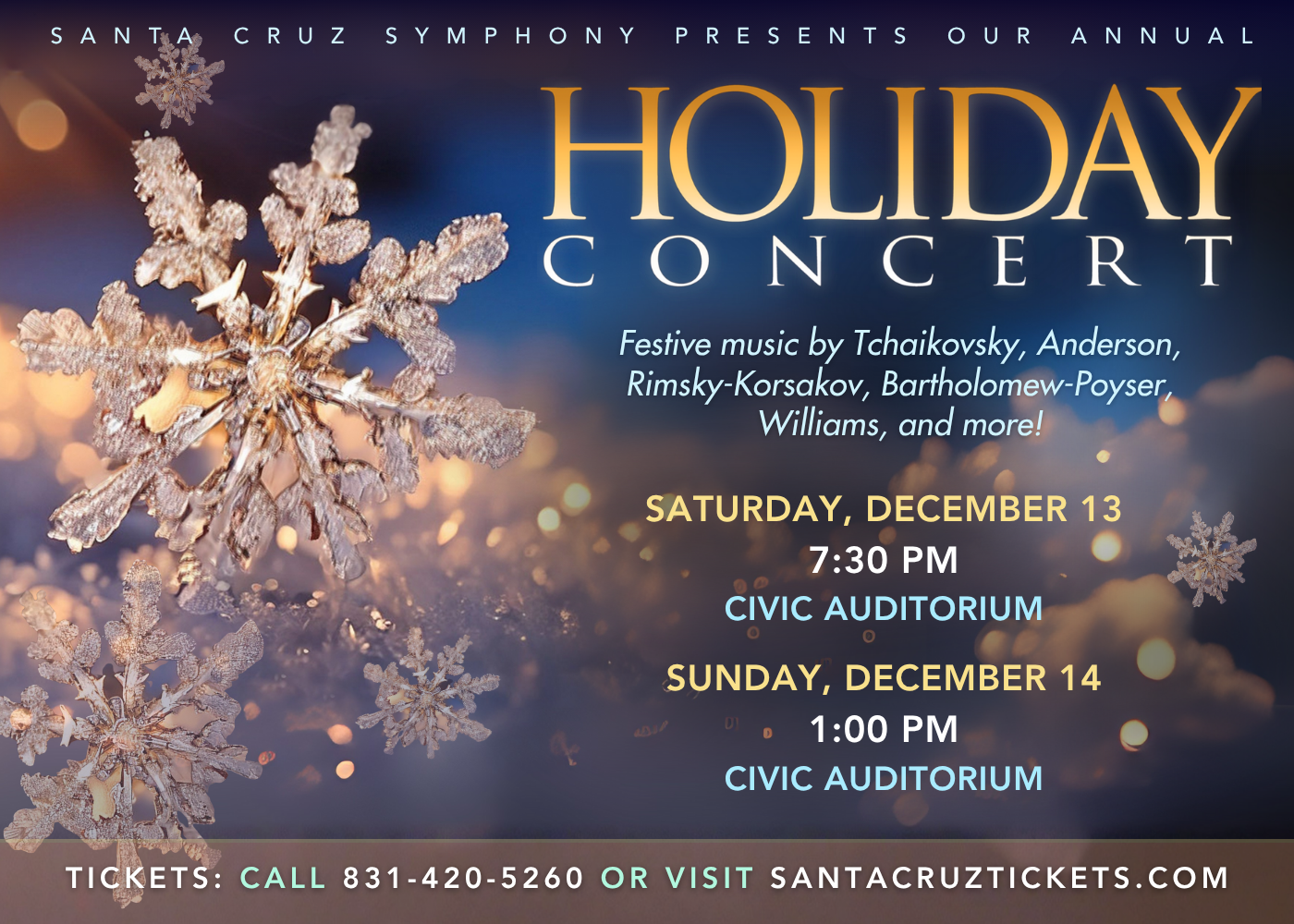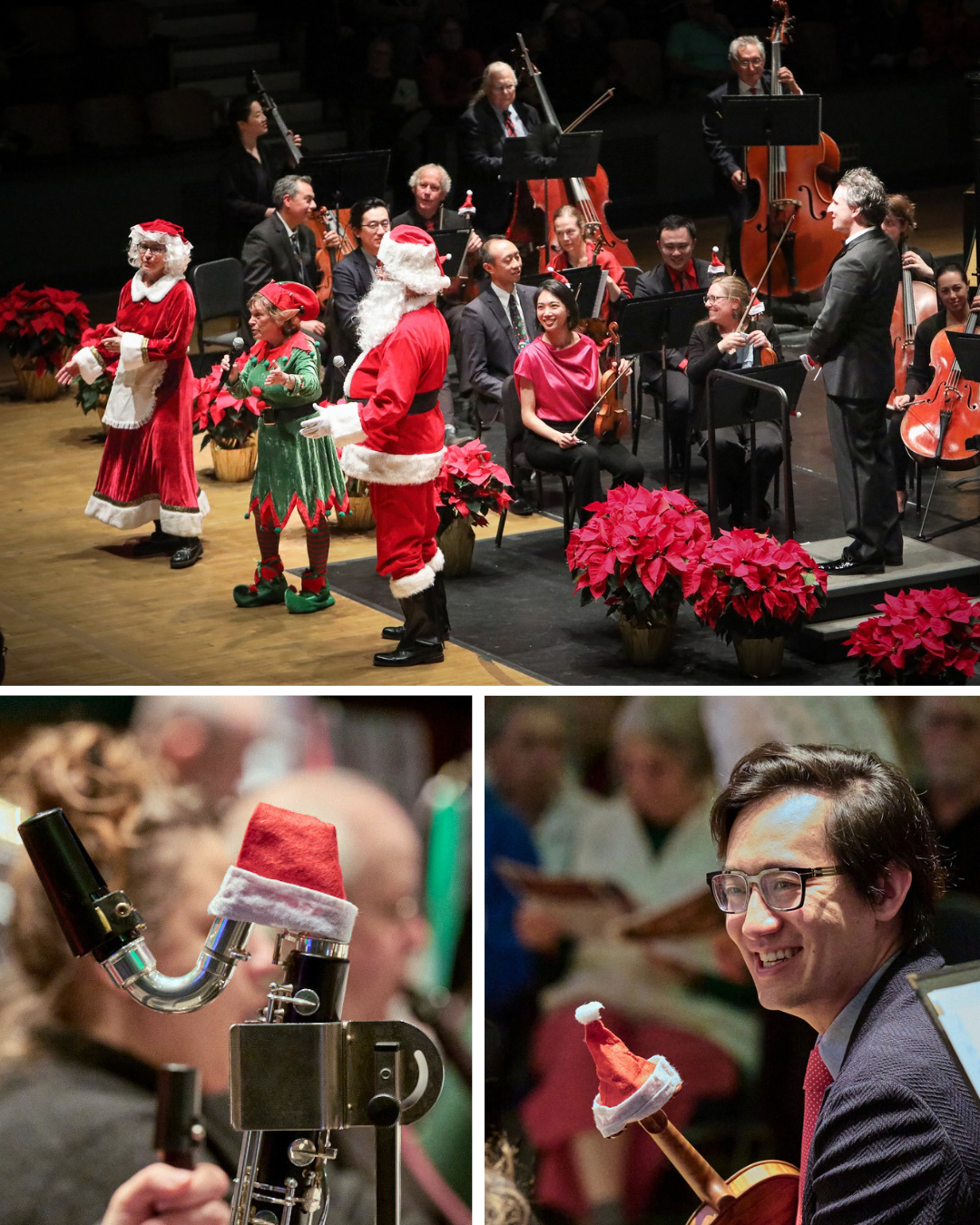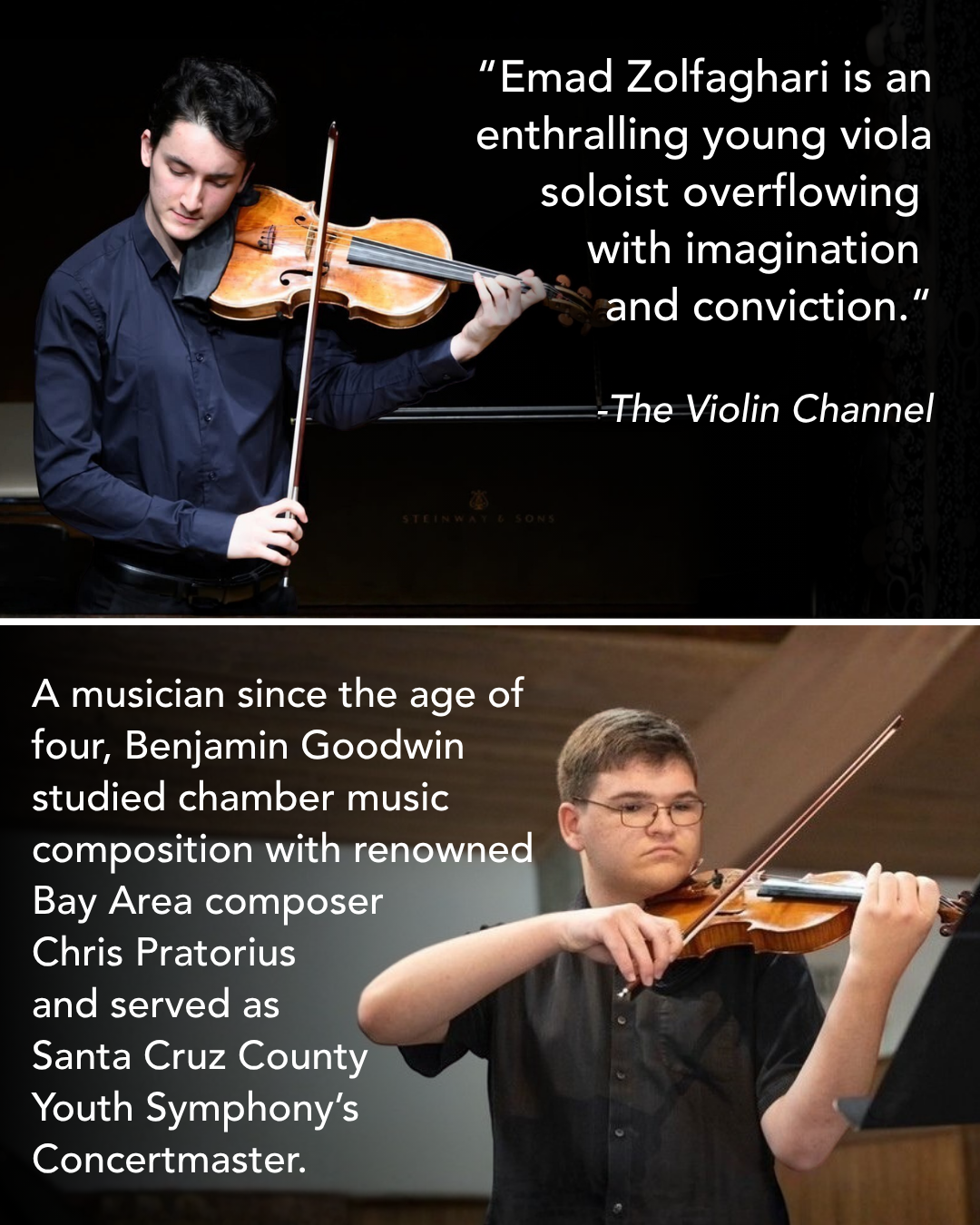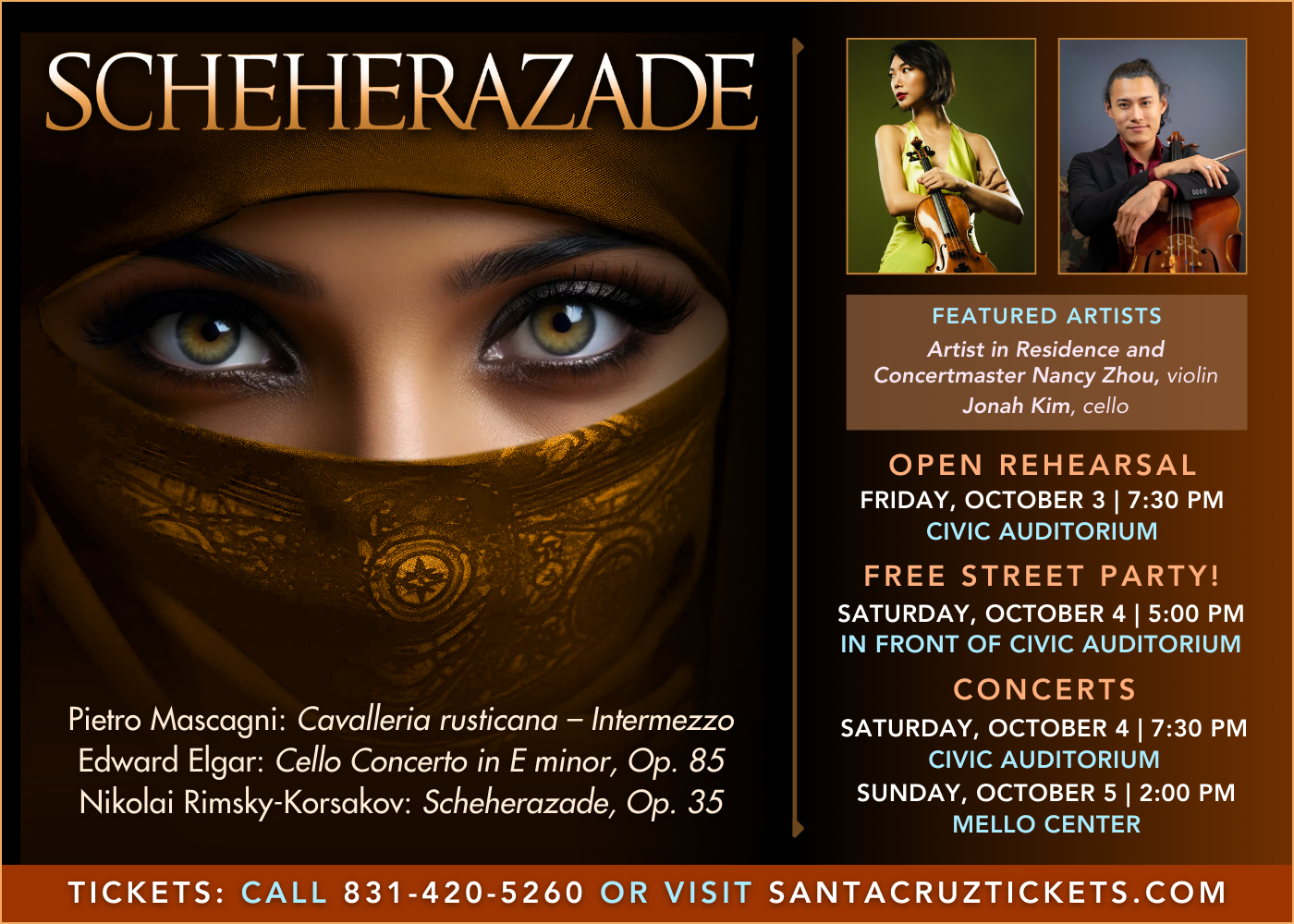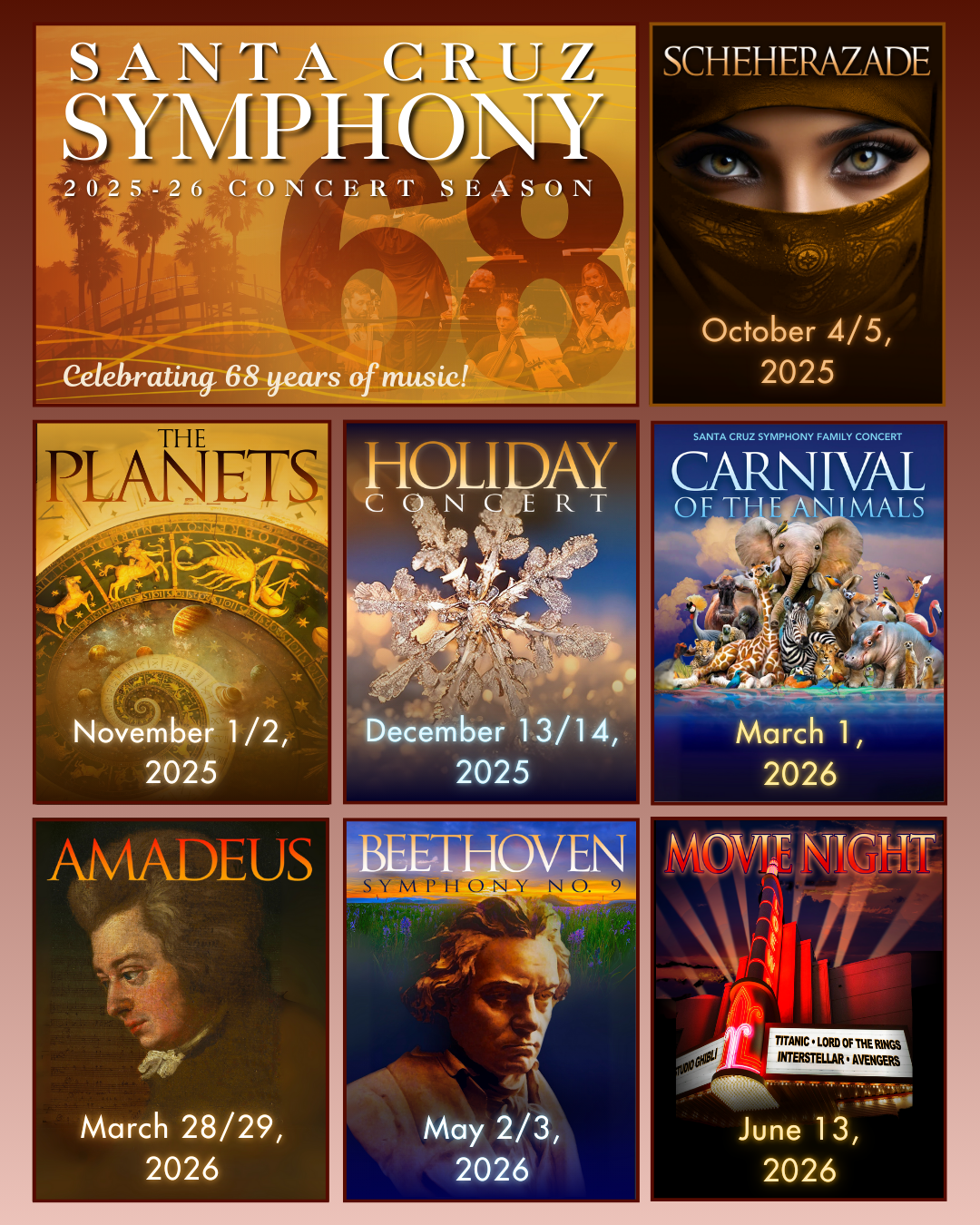On December 13 and 14, Santa Cruz Symphony will deliver a spirited family celebration of holiday music for Christmas, Hanukkah, and Kwanzaa featuring many of your favorites. The Holiday Concert is a presentation for the whole family, with reduced ticket prices on most seats. Our show even includes a lively sing-along for added fun!
Children are welcome at our Holiday Concert, and kids under 18 can buy tickets for just $15. Show up before the concert starts and get creative at our craft station, where you can make and decorate your own bracelets and holiday ornaments.
There's nothing quite like live orchestral music to bring the magical spirit of the season to life. As the nights draw in and winter approaches, give yourself and your family the gift of festive music enjoyed together with your community. Get your Holiday Concert tickets today!
SATURDAY, DECEMBER 13
7:30 PM at Civic Auditorium
(doors open at 6 PM)
SUNDAY, DECEMBER 14
1:00 PM at Civic Auditorium
(doors open at 11:30 AM)
HOLIDAY TICKET SPECIAL:
Youth tickets (ages 3–17) are just $15 each!


